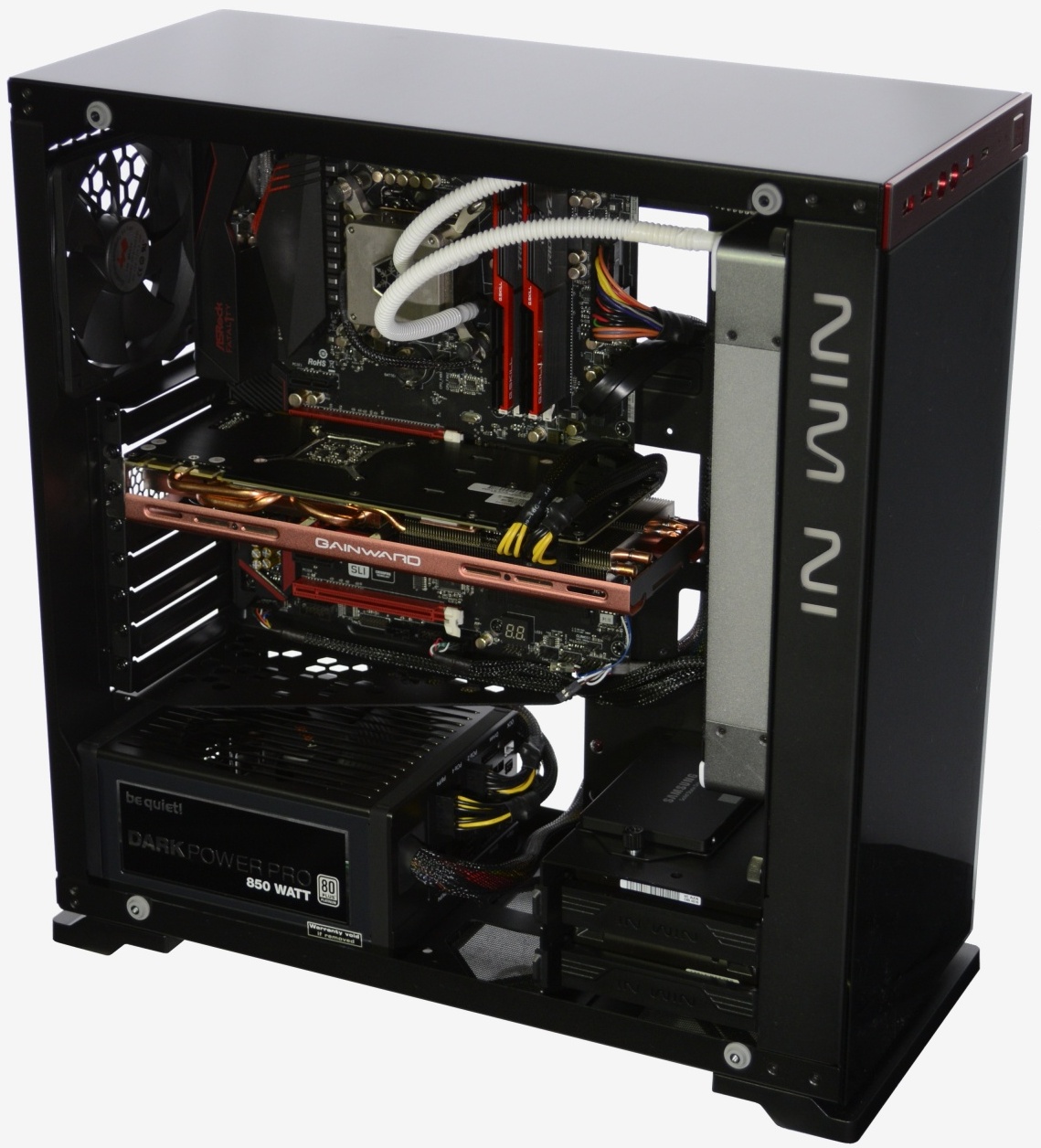Thermals & Conclusion
To ensure accurate thermal results, we installed the same hardware in each case in virtually the same way. Components included the Asrock Fatal1ty 990FX Professional, Phenom II X6 1100T, Prolimatech Megahalems in passive mode (i.e. no fan actively dispelling heat), Inno3D GeForce GTX 580 OC, as many Western Digital Scorpio Blue 500GB hard drives as we can install, and OCZ's ZX 1000w power supply.

As we suspected, the In Win 805 doesn't perform that well out of the box, allowing our CPU to reach 94 degrees and the GPU 86 degrees. These temperatures match the Cooler Master Storm Scout 2, which also only comes with a single 120mm exhaust fan, though the Scout 2 is heavily ventilated.
The In Win 805 simply looks too good to leave it at that, so we installed a pair of front mounted 140mm intake fans. These results can't really be compared with the other cases as they were all tested in their stock configuration. That said, it does give a good idea of how much better the 805 will perform with what we can only imagine will be a typical setup for most users.
The intake fans moved much more cool air through the 805 and as a result the CPU temperature dropped by 22 degrees, while the GPU ran 8 degrees cooler. Keep in mind that the CPU heatsink is passively cooled which is why the extra airflow really helped improve performance.
Wrap Up: Form over function, but we still love it
Although it's incredibly difficult to photograph, the In Win 805 is a spectacularly good looking computer case – certainly one of the best looking sub-$200 models we've reviewed. With two tempered glass side panels, this model was clearly designed for those who want to show off their hardware and their cable routing skills.
The 805 might not be the best computer case when it comes to thermal performance, but with a 240/280mm radiator mounted in the front we were able to run our Intel Core i7-6700K processor at 4.8GHz while keeping temperatures in check. Users could also look at mounting a 120mm radiator in the back for additional GPU/CPU cooling as well.
Considering its cooling capabilities, the 805 also isn't the best choice for more than two GPUs, though you can technically install four dual-slot cards. The idea of being limited to dual-GPUs shouldn't scare most potential buyers and we figure most folks eyeing three or four GPUs will look at spending more than $200 their computer case.
The 805 will be more than sufficient for anyone looking to install a current-generation Intel or AMD processor alongside a single high-end graphics card such as the GeForce GTX 980 Ti.
Apart from the enclosure's incredible looks, the highlight for us is its price. Too often we come away from an In Win review loving the product but hating its price. With the 805 we love the product and are pleasantly surprised by its price.
As we understand it the 805 will sell for no more than $200 and should drop below this price shortly after release later this month.
While the lack of support for I/O shields is odd at best, our only real criticism we have of the 805 relates to its thermal performance. Had In Win included options for top mounted fans and possibly a radiator the case would offer considerably better cooling. The solid aluminum top panel does look great, but we are not sure the performance trade-off is worth it.
Shopping shortcuts:
Overall, the 805 is perfect those who enjoy admiring their gear. If your system doesn't need a large volume of airflow then there really aren't any drawbacks to the 805, besides the fact that you'll have a part time job cleaning dust, fingerprints and possibly even drool off the glass panels.
score
Pros: The 805's tempered glass, smooth aluminum and honeycomb cutouts are a special sight, especially for $200 or less.
Cons: Between its limited ventilation and single 120mm exhaust, you'll probably want to upgrade the 805's stock cooling.

